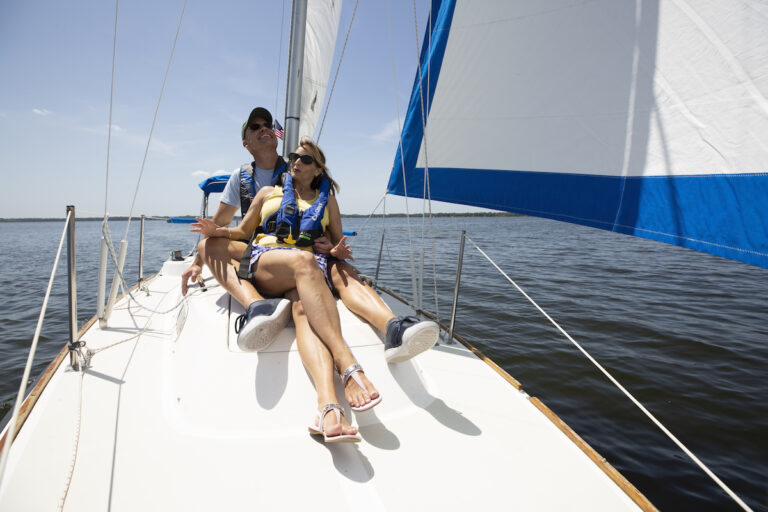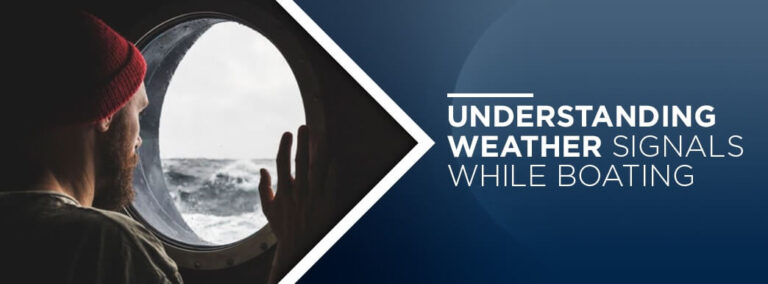Dress for Success: What to Wear on Your First Sailing Trip
Dress comfortably and weather-appropriate for your first sailing trip by wearing lightweight, breathable clothing and non-slip footwear. Heading out on your first sailing trip?
It’s essential to dress for the occasion to ensure a comfortable and enjoyable experience. Whether you’re embarking on a leisurely cruise or setting sail for an adventurous voyage, your choice of attire plays a crucial role. Dressing for success on a sailing trip involves selecting clothing that is comfortable, weather-appropriate, and suitable for the maritime environment.
This means opting for lightweight and breathable materials that will keep you cool in hot weather and protect you from the elements. Additionally, non-slip footwear is crucial to prevent accidents on a boat’s slippery surfaces. By following these guidelines, you’ll be ready to make the most of your first sailing adventure.
Factors To Consider For Sailing Attire
When planning for your first sailing trip, it’s important to consider the factors that will affect your attire. Dress appropriately for the weather conditions, choose quick-drying and comfortable fabrics, and don’t forget to bring essential accessories like sunglasses and hats.
Whether you’re embarking on a cruising adventure, participating in a thrilling racing competition, or simply going on a day trip, choosing the right attire for your sailing adventure is essential. Understanding the factors that influence what to wear will ensure you are comfortable and prepared for whatever the open sea throws your way.
When it comes to selecting your sailing outfit, consider the following factors:
Weather Conditions And Temperature
- Check the weather forecast before your trip to determine what conditions you may encounter.
- Dress in layers so you can adjust your attire throughout the day as the temperature changes.
- Opt for moisture-wicking fabrics to keep you comfortable if you encounter rain or splashes from the waves.
- Protect yourself against the sun with lightweight, breathable clothing and a wide-brimmed hat.
- Bring a waterproof jacket or windbreaker in case of unexpected showers or cooler winds.
Type Of Sailing Trip (Cruising, Racing, Day Trip)
- Different sailing activities call for different types of attire. Consider the purpose of your trip to guide your clothing choices.
- For a casual cruising trip, comfortable and relaxed clothing such as shorts, T-shirts, and sandals are suitable.
- Racing events may require more specialized gear, such as sailing boots, gloves, and high-performance clothing that allows for freedom of movement.
- If you’re going on a day trip, opt for comfortable clothing that allows you to move easily and protects you from the elements.
Duration Of The Sailing Trip
- The length of your sailing adventure will impact your clothing choices. Consider how many days you will be at sea to ensure you have enough clean and comfortable clothes for the entire trip.
- Pack enough underwear and socks for each day, as these items tend to get damp or dirty quickly.
- Depending on the facilities available, you may also want to pack additional clothing for changing into after a day on the water.
By carefully considering the weather conditions, type of sailing trip, and duration of your adventure, you can make informed decisions about what to wear on your first sailing trip. Dressing appropriately will not only keep you comfortable but also enhance your overall experience.
So, pack your bags, put on your sailing gear, and get ready for a memorable voyage on the open seas!
Essential Clothing And Accessories For Beginners
Planning your first sailing trip? Make sure to dress for success by choosing essential clothing and accessories that are comfortable, practical, and suitable for the sailing environment. From durable shoes to moisture-wicking fabrics, this guide has got you covered.
Spf-Rated Clothing And Hats
- Protection from the sun’s harmful rays is essential when out at sea. Opt for clothing and hats with an SPF rating to shield your skin from prolonged sun exposure.
- Look for lightweight, breathable fabrics that offer UPF (Ultraviolet Protection Factor) to effectively block UV radiation.
- Wide-brimmed hats are especially helpful in providing shade for your face, neck, and ears, while also protecting your scalp from sunburn.
Moisture-Wicking Base Layers
- When sailing, it’s crucial to stay dry and comfortable throughout your trip. Moisture-wicking base layers are designed to keep moisture away from your skin, allowing it to evaporate more quickly.
- Look for base layers made from synthetic materials such as polyester or nylon. These fabrics excel at wicking away sweat, preventing it from clinging to your body.
- Avoid cotton as it retains moisture and can leave you feeling damp and uncomfortable.
Waterproof And Windproof Outerwear
- Being prepared for unpredictable weather conditions is vital on a sailing trip. Invest in waterproof and windproof outerwear to stay protected from rain and gusty winds.
- Look for jackets and pants made from durable, waterproof materials like GORE-TEX or similar fabrics. These will keep you dry even in heavy rain or when splashed with seawater.
- Opt for garments with adjustable cuffs, hems, and hoods to ensure a snug fit and better protection against wind and rain.
Non-Slip Footwear
- The deck of a sailboat can become slippery, especially when wet, so wearing non-slip footwear is crucial for safety.
- Look for deck shoes or sailing boots with rubber soles that provide excellent grip on both wet and dry surfaces.
- Avoid wearing regular sneakers or shoes with smooth soles, as they can pose a slipping hazard on a boat.
Sunglasses With UV Protection
- Protecting your eyes from the sun’s harmful UV rays is essential when spending time on the water. Choose sunglasses that provide UV protection to safeguard your vision.
- Look for sunglasses with 100% UV protection, blocking both UVA and UVB rays.
- Polarized lenses can also be beneficial as they reduce glare from the water’s surface, improving visibility and reducing eye strain.
Remember, dressing appropriately for your first sailing trip is crucial for both comfort and safety. Investing in SPF-rated clothing, moisture-wicking base layers, waterproof and windproof outerwear, non-slip footwear, and sunglasses with UV protection will ensure you have an enjoyable and worry-free experience on the water.
Safety Gear And Equipment
Prepare for a successful sailing trip with the right safety gear and equipment. Dress appropriately to ensure comfort, protection, and confidence on your first adventure on the water.
When you embark on your first sailing trip, it’s crucial to prioritize safety by wearing the appropriate gear and having essential equipment on board. Here are the key safety considerations and gear you need to know:
Life Jackets Or Personal Flotation Devices (Pfds)
- Ensure that each person on board has a well-fitting PFD or life jacket.
- PFDs should be worn at all times while on the water, especially in rough conditions or if you are not a confident swimmer.
- Look for Coast Guard-approved PFDs that are designed for sailing and offer maximum buoyancy.
- Check the condition of your PFDs regularly, ensuring they are properly maintained and do not have any signs of wear or tear.

Safety Harness And Tether
- Use a safety harness and tether to prevent falling overboard in rough seas or unpredictable conditions.
- The harness should fit snugly and have a strong attachment point to the boat.
- Attach the tether to a secure point on the boat, ensuring a limited range of movement while still providing mobility.
- Familiarize yourself with how to properly use the safety harness and tether before setting sail.
Heat-Retention Gear For Cold-Water Sailing
- If you’re sailing in cold-water conditions, dress appropriately to prevent hypothermia.
- Wear multiple layers, including moisture-wicking base layers, insulating mid-layers, and waterproof outer shells.
- Invest in thermal hats, gloves, and socks to keep extremities warm.
- Consider wearing a wetsuit or drysuit for additional protection against the cold water.
Navigation Tools And Aids
- Carry essential navigation tools such as a marine compass, chart plotter, and GPS.
- Learn how to use these tools effectively before your sailing trip to navigate with confidence.
- Carry up-to-date nautical charts and almanacs to understand the area’s tides, currents, and potential hazards.
- Consider having backup navigation tools, such as handheld GPS devices or compasses.
First-Aid Kit
- Always have a well-stocked first-aid kit on board.
- Include items such as adhesive bandages, antiseptic wipes, gauze pads, medical tape, and pain relievers.
- Familiarize yourself with basic first-aid procedures and know how to handle common injuries encountered on a sailing trip.
- Regularly check your first-aid kit to ensure all supplies are up to date and replace any expired items.
Ensure your safety and that of your fellow sailors by adhering to these guidelines and having the necessary safety gear and equipment on your first sailing trip. Remember, safety should always be your top priority when out on the water.
Dress Code Etiquette For Yacht Clubs And Formal Sailing Events
Wondering what to wear on your first sailing trip or to a yacht club event? Dress code etiquette for formal sailing events and yacht clubs calls for elegant and appropriate attire. Whether it’s a dress or slacks with a blazer for women, or classic nautical-inspired outfits for men, dressing for success is key to making the right impression.
Proper Attire For Yacht Club Events And Social Activities
- Dress code etiquette is an essential aspect of yacht club events and social activities. Your attire should reflect the sophistication and elegance associated with these occasions.
- To ensure you make the right impression, here are some guidelines on what to wear to yacht club events and social activities:
- Smart casual:
- Opt for a collared shirt or blouse paired with tailored trousers or a knee-length skirt.
- Choose sophisticated colors and patterns, avoiding overly casual or loud designs.
- Women can also wear a tasteful dress or a skirt suit.
- Men should consider wearing a blazer or a sports coat.
- Formal attire:
- Formal occasions may call for a more sophisticated dress code.
- Men should consider wearing a tailored suit in a traditional color, such as navy or charcoal.
- Women can opt for an elegant cocktail dress or a formal gown.
- Dress shoes and minimalistic accessories add a polished touch to your outfit.
Dress Code Guidelines For Formal Sailing Events
- Formal sailing events demand a higher level of elegance and adherence to specific dress codes. Here are some guidelines to ensure you dress appropriately:
- Dress for the weather:
- Depending on the location and time of the sailing event, the weather conditions may vary.
- Check the forecast and dress accordingly, considering the possibility of wind, sun, or cooler temperatures.
- Layering your clothing can help you adapt to changing weather conditions.
- Nautical-themed attire:
- Channel the nautical spirit by incorporating maritime elements into your outfit.
- Classic navy and white color combinations, stripes, and gold accents can create a stylish and appropriate look.
- Sailing-specific clothing:
- If you plan to actively participate in the sailing experience, consider wearing appropriate clothing.
- Non-slip deck shoes, sailing gloves, and technical fabrics that wick away moisture are practical choices.
Accessories And Grooming Tips For A Polished Look
Attention to detail is crucial when it comes to achieving a polished and sophisticated appearance. Consider the following accessories and grooming tips:
Jewelry and accessories:
- Keep it minimalistic and classy. Opt for simple and elegant pieces that complement your outfit without overpowering it.
- For men, a quality wristwatch and understated cufflinks can add a touch of refinement.
- For women, tasteful earrings, a delicate necklace, or a stylish scarf can elevate your overall look.
Grooming:
- Ensure your hair is well-groomed and styled accordingly.
- Keep nails clean and neatly trimmed.
- Pay attention to personal hygiene and wear a pleasant fragrance, but avoid overpowering scents.
Remember, the key to dressing for success on your first sailing trip lies in understanding and respecting the dress codes of yacht clubs and formal sailing events. By following these guidelines and putting effort into your appearance, you’ll feel confident and ready to enjoy an unforgettable experience on the water.
Tips For Packing Efficiently For A Sailing Trip
Discover the essential wardrobe for your first sailing adventure with these helpful tips for packing efficiently. Dress for success on the open waters by selecting practical, weather-appropriate clothing that allows for free movement and protection from the elements.
Dress For Success: What To Wear On Your First Sailing Trip
Embarking on your first sailing adventure is an exhilarating experience. From the sense of freedom on the open water to the picturesque coastal views, there’s no doubt that you’re in for a memorable journey.
However, as you prepare for this exciting adventure, it’s crucial to pack efficiently to ensure you have everything you need without overwhelming your limited space on board.
In this section, we’ll provide you with essential tips for packing efficiently for your upcoming sailing trip. So, let’s set sail and dive right in!
Packing Light And Versatile Clothing:
When it comes to dressing for a sailing trip, it’s essential to pack light and prioritize versatile clothing options. Here are some key factors to consider:
- Choose lightweight, quick-drying fabrics: Opt for clothing made from materials like polyester or nylon, as they dry quickly, allowing you to stay comfortable even if you get wet.
- Pack mix-and-match pieces: Bring clothes that can be easily layered and mixed to create various outfits. This way, you can maximize your outfit options while minimizing the number of items you need to pack.
- Include a range of clothing styles: Depending on the nature of your trip, pack casual attire for daytime activities and dressier options for evening outings or dining ashore.
- Don’t forget swimwear: It goes without saying that swimsuits are a must for any sailing trip. Pack a couple of them to ensure you have enough for any spontaneous dips in the crystal-clear waters along the way.
Consideration Of Space Limitations On Board:
On a sailing vessel, space is a precious commodity. Therefore, it’s crucial to consider the limited room available for your belongings. Keep these tips in mind:
- Opt for collapsible or compressible items: Choose items that can be easily folded, rolled, or compressed to save space in your luggage.
- Use packing cubes or compression bags: These handy tools help you organize your clothes and maximize the available space in your suitcase or backpack.
- Minimize bulky items: Avoid packing large, heavy clothing items that are difficult to store. Instead, opt for lightweight and compact alternatives.
- Coordinate with your fellow sailors: If you’re sharing a cabin, communicate with your cabinmates about what each person will bring to avoid unnecessary duplicates and save space.
Clothes For Different Weather Scenarios:
One of the beauties of sailing is being exposed to various weather conditions. Prepare for any situation with these clothing essentials:
- Light layers: Pack lightweight long-sleeved shirts, cardigans, or jackets for cooler evenings or windy days.
- Breathable t-shirts: These are perfect for warmer days to keep you comfortable and cool under the sun.
- Waterproof outerwear: Invest in a quality waterproof jacket to keep you dry during unexpected rain showers or while cruising through ocean sprays.
- Wide-brimmed hat: Protect yourself from the sun by bringing a hat with a wide brim to shield your face, neck, and ears from harmful rays.
- Durable footwear: Choose non-marking, closed-toe shoes with a good grip to ensure your safety on deck and for exploring ashore.
Toiletries And Personal Care Items Essentials:
Maintaining personal hygiene and taking care of yourself while sailing is crucial. Here are some essentials to pack:
- Biodegradable toiletries: Opt for environmentally friendly options to minimize your impact on the marine ecosystem.
- Sunscreen: Protect your skin from harmful UV rays by bringing sunscreen with a high sun protection factor (SPF).
- Basic skincare items: Pack a small supply of soap, shampoo, and skin care products suitable for your skin type.
- Medications and seasickness remedies: If you suffer from motion sickness, bring the necessary medications or remedies recommended by your healthcare professional.
- Quick-drying towels: Choose compact, quick-drying towels that take up minimal space in your luggage.
Storage Solutions For Organizing Your Belongings:
Keeping your belongings organized is essential for a hassle-free sailing trip. Consider these storage solutions:
- Foldable storage bags: Use foldable bags to separate your clothes based on category, making it easier to locate specific items.
- Hanging organizers: Utilize hanging organizers to maximize vertical space in your cabin or wherever storage hooks are available.
- Storage nets or baskets: Install storage nets or baskets in your cabin to hold personal items, such as electronics or books, securely in place.
- Multi-purpose hangers: Opt for hangers with multiple hooks or clips to hang smaller items like hats, belts, or accessories.
Now that you have a comprehensive understanding of how to pack efficiently for your sailing trip, you can focus on enjoying your adventure to the fullest. Bon voyage, fair winds, and smooth sailing!
Additional Considerations For Women’s Attire
When preparing for your first sailing trip, women should consider additional factors when choosing their attire. Opt for comfortable, lightweight clothing that allows for ease of movement and protection from the elements. Consider packing a hat, sunglasses, and sunscreen for added sun protection.
Choosing Appropriate Swimwear:
When it comes to dressing for a sailing trip, one important consideration for women is choosing the right swimwear. Here are some tips to help you select suitable swimwear for your sailing adventure:
- Opt for swimwear made from quick-drying materials, such as nylon or polyester, to ensure comfort throughout the trip.
- Consider wearing a one-piece swimsuit or a bikini with a secure fit to prevent any wardrobe malfunctions while sailing.
- Choose swimwear in vibrant colors or patterns, as it adds a touch of style and ensures visibility in case of emergencies.
- If you plan to engage in water activities such as snorkeling or diving, a rash guard or a wetsuit can provide additional protection from the elements.
Dressing Stylishly While Maintaining Functionality:
While it’s important to look stylish, comfort and functionality should not be compromised while dressing for a sailing trip. Here are some tips to help you strike the perfect balance between style and practicality:
- Prioritize lightweight, breathable fabrics such as linen or cotton, as they are comfortable and allow for easy movement on board.
- Opt for versatile clothing items that can be layered, such as a lightweight jacket or a cardigan, to adjust to changing weather conditions.
- Choose footwear that offers both comfort and stability. Closed-toe shoes or boat shoes with good grip are ideal to prevent slipping on wet decks.
- Don’t forget to bring a wide-brimmed hat and polarized sunglasses to protect yourself from the sun’s rays while maintaining a fashionable look.
Haircare Tips For Sailing Trips:
Managing your hair during a sailing trip can be a challenge, especially with the wind and saltwater. Here are some haircare tips to help you maintain your locks:
- Tie your hair back in a braid or a ponytail to prevent it from getting tangled in the wind. You can use hair accessories like scrunchies or hairbands.
- Apply a leave-in conditioner or hair oil to provide moisture and protect your hair from the drying effects of the sun and saltwater.
- Consider using a wide-toothed comb or a detangling brush to gently remove any knots or tangles without causing damage.
- If you prefer to keep your hair down, bring a hat or a scarf that can double as a hair accessory and provide additional protection.
Makeup Considerations For Different Weather Conditions:
When it comes to makeup on a sailing trip, it’s important to consider the weather conditions to ensure your look lasts and suits the environment. Here are some considerations based on different weather scenarios:
- Hot and sunny weather: Opt for a lightweight foundation or tinted moisturizer with SPF to protect your skin from the sun while providing some coverage. Use waterproof mascara to avoid smudging. Choose a lip balm with SPF to keep your lips hydrated and protected.
- Windy conditions: Avoid using sticky lip gloss or loose powder as they can attract dirt and create a messy look. Opt for a long-lasting lipstick or lip stain and use a setting spray to keep your makeup in place.
- Rainy weather: Choose waterproof or water-resistant makeup products to avoid smudging or running. Consider using a cream blush or a stain for a natural flush of color on your cheeks.
Remember, while makeup can enhance your features, it’s important to prioritize comfort and protection against the elements during your sailing adventure.
Practical Tips For Dressing Comfortably On A Sailing Trip
Heading out on your first sailing trip? Stay comfortable with these practical tips for dressing. Find out what to wear for a successful and enjoyable experience on the water.
Layering Techniques For Temperature Control
- Layering is crucial when it comes to dressing comfortably on a sailing trip. It allows you to adapt to changing weather conditions and maintain the optimal body temperature throughout your journey.
- Start with a moisture-wicking base layer that keeps sweat away from your skin. Opt for lightweight and breathable materials such as merino wool or synthetic fabrics.
- Add a mid-layer for insulation. Fleece jackets or pullovers are great options as they provide warmth while still being lightweight and easy to move in.
- Finally, top it off with a waterproof and windproof outer layer to protect yourself from the elements. Look for jackets or sailing-specific gear that is designed to keep you dry and shield you from harsh winds.
Breathable And Quick-Drying Fabrics
- Choosing the right fabrics for your sailing trip can greatly enhance your comfort level. Opt for breathable materials that allow air to flow freely, preventing you from overheating.
- Look for fabrics such as nylon or polyester blends that are known for their moisture-wicking properties. These fabrics will pull sweat away from your body and dry quickly, keeping you cool and dry even in warmer conditions.
- Avoid cotton as it tends to absorb moisture and can leave you feeling damp and uncomfortable for extended periods.
Choosing Comfortable Footwear
- Opt for closed-toe shoes or sailing-specific footwear that offers both comfort and protection. Look for shoes with non-slip soles to ensure stability on wet surfaces.
- Boat shoes or deck shoes are popular choices as they provide good grip and are designed to dry quickly. Consider shoes with mesh panels for breathability and drainage holes to prevent water accumulation.
- Avoid heavy hiking boots as they can be bulky and uncomfortable on a sailing trip. Lightweight and flexible shoes will allow you to move easily on the boat while providing the necessary support.
Avoiding Clothes That Can Get Caught In Rigging Or Gear
- When selecting your sailing attire, it’s important to consider safety. Avoid loose-fitting clothes that can get caught in rigging or gear, as they pose a risk of accidents.
- Opt for snug-fitting tops and bottoms that won’t flap around in the wind. This will ensure you can move freely without any potential hazards.
- Look for clothing with minimal embellishments, such as buttons or buckles, as they can snag on equipment. Opt for smooth, streamlined designs instead.
Remember, dressing comfortably on your first sailing trip is essential for an enjoyable experience. Layering, breathable fabrics, comfortable footwear, and avoiding clothes that can get caught will help keep you safe, comfortable, and ready to embrace the thrill of the open water.
Environmental Impact And Sustainable Clothing Choices
Explore sustainable clothing options and reduce your environmental impact on your first sailing trip. Dress for success with eco-friendly fabrics that prioritize sustainability and style. Choose clothing that aligns with your values and promotes a greener future.
Recognizing The Impact Of Synthetic Materials On The Marine Environment
- Synthetic materials often used in clothing production, such as polyester and nylon, have a significant negative impact on the marine environment.
- When these synthetic fabrics are washed, they release microfibers into the water, which ultimately end up in the ocean.
- Microfibers are harmful to aquatic life as they are ingested by marine animals, leading to detrimental health effects.
- Synthetic materials also do not biodegrade easily, leading to long-lasting pollution in our oceans.
Sustainable Fabric Options For Sailing Attire
- Opting for sustainable fabric choices when selecting your sailing attire can help minimize the environmental impact.
- Organic cotton is a great option as it is grown without the use of harmful pesticides and synthetic fertilizers.
- Hemp is another sustainable choice as it requires fewer resources to grow compared to other crops and it is naturally resistant to pests.
- Tencel or Lyocell, made from wood pulp, is a sustainable alternative to traditional synthetic fabrics and is both soft and breathable.
- Recycled polyester is an eco-friendly option as it utilizes post-consumer waste, such as plastic bottles, to create new fabric.
Clothing Maintenance And Care For Longevity
- Proper clothing maintenance and care are essential to ensure your sailing attire lasts longer, reducing the need for frequent replacements and subsequent waste production.
- Follow the care instructions on your clothing labels to maintain their quality and extend their lifespan.
- Wash your clothes with cold water using eco-friendly detergent to minimize energy usage and prevent further harm to the environment.
- Air-drying your clothes instead of using a dryer can help reduce energy consumption while preserving the fabric’s integrity.
- Repair any damages promptly to prevent further deterioration and prolong the life of your sailing attire.
Remember, when it comes to choosing what to wear on your first sailing trip, it’s essential to consider the environmental impact and opt for sustainable clothing choices. By recognizing the detrimental effects of synthetic materials on the marine environment, you can make a conscious decision to choose fabrics that are eco-friendly.
Sustainable options like organic cotton, hemp, Tencel, and recycled polyester are not only better for the environment but also provide comfort and durability. Additionally, taking proper care of your clothing through maintenance and repairs ensures its longevity and reduces waste production.
So, dress for success on your sailing adventure while minimizing your ecological footprint.
Frequently Asked Questions On Dress For Success: What To Wear On Your First Sailing Trip
How Should I Dress For A Sailboat Trip?
Choose comfortable and lightweight clothing for a sailboat trip. Opt for layers to accommodate changing weather conditions.
What Do I Need For First-Time Sailing?
For your first time sailing, you’ll need a boat, life jackets, navigation tools, and proper training.
What Does A Woman Wear Sailing?
A woman sailing typically wears a life jacket, comfortable clothing suitable for the weather, and appropriate footwear.
What Do People Wear On A Sailboat?
People on a sailboat typically wear comfortable and weather-appropriate clothing that allows for easy movement and protects them from the sun.
Conclusion
Embarking on your first sailing trip can be an exciting and memorable experience. Knowing what to wear will not only ensure your comfort but also contribute to your safety and enjoyment on the water. Remember to pack versatile clothing that can shield you from the sun and protect you from the wind, while also allowing for easy movement.
Opt for swimwear that is both functional and stylish, and don’t forget to pack a hat, sunglasses, and sunscreen to shield yourself from the elements. Layering is key, so pack a waterproof jacket for unexpected weather changes. When it comes to footwear, choose non-slip and water-resistant options that provide good support.
Remember, comfort and practicality should be prioritized over fashion while sailing. By following these guidelines and choosing appropriate attire, you can dress for success and fully enjoy your first sailing trip. Happy sailing!








